The Week That Was: Tiny Treats
Calligraphy has really taken over my world right now, so while I have a few free moments and in need of a little reward after finishing up the second part of a huge deadline, I thought I would spoil myself with a few tiny treats. Of course, these would be calligraphy treats!
One of the greatest feelings of learning a new skill or taking up a new creative pastime is learning about the different supplies, tools and products. Discovering what they do, how to use them and what your personal favourites are.
In the short, short time that I’ve been working on learning hand lettering and modern calligraphy I have learnt a few very basic but super important facts.
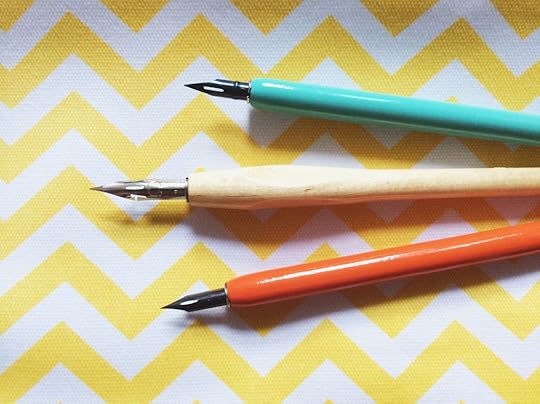 Fact 1 You can never have enough paper
Fact 1 You can never have enough paper
It is a simple fact that if you want to learn hand lettering or calligraphy you need to put in the practice. Practice burns through paper like nobody’s business.
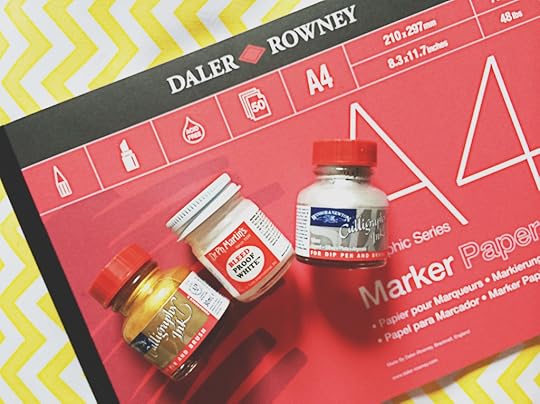
Fact 2 You can never have enough inks
The more letterforms you work on the more you have to dip your pen in your ink the quicker you’ll use up your supply.
Fact 3 Pristine nibs make for better letters
Neat precise lettering simply can’t be achieved with a battered old nib. Taking the time to gently clean off all the inks and dry thoroughly will prolongs the life of each nib.
Yes – these might be the most obvious facts about calligraphy you’ll ever read. Facts that you’d assume that people would already know. But, I have to say that I was really surprised at how quickly I have been going through my paper and ink stash. With daily calligraphy practice it is no surprise that you’ll need to re-stock these supplies.
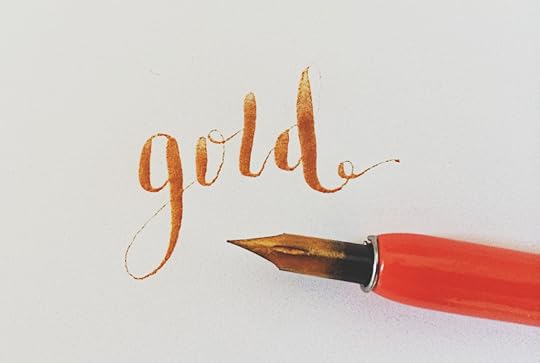 To give my lettering paractice a little bit of variety I have mixed it up with some new metallic inks!
To give my lettering paractice a little bit of variety I have mixed it up with some new metallic inks!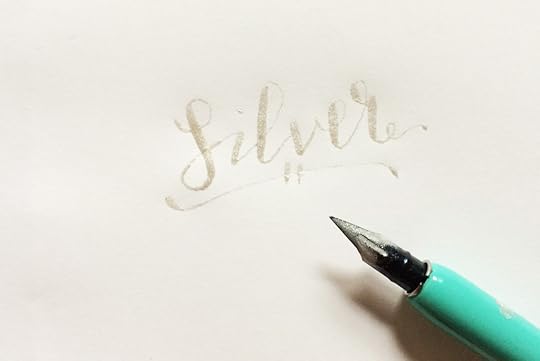 I’ve decided to keep my practice interesting with different styles of paper – crisp blank sheets, squared paper, bleed-proof natural brown, and picking out a selection of inks – metallics and white to contrast that dramatic black that has become a daily staple! For the most part I have been working with Gillott 404 and 303 nibs and a Leonardo Crown nib – finding what is the most comfortable for me, what styles I can create and what techniques I find are better suited for me with each one.
I’ve decided to keep my practice interesting with different styles of paper – crisp blank sheets, squared paper, bleed-proof natural brown, and picking out a selection of inks – metallics and white to contrast that dramatic black that has become a daily staple! For the most part I have been working with Gillott 404 and 303 nibs and a Leonardo Crown nib – finding what is the most comfortable for me, what styles I can create and what techniques I find are better suited for me with each one.
I have read on many calligraphy sites and forums that a damaged old nib makes it impossible to create the neat thin upstrokes and the deep flourishing downstrokes of copperplate lettering. I understand this in principle, of course I do. But, how do you know in practice when the nib is old and tired? Well there’re a few Clues to Spot When To Replace Your Nib…
The tip of the nib will catch and scratch on the paper preventing you from creating neat smooth thin lines of the upstrokes.
The two tines – the straight sections that sit either side of the split that runs down the centre of the nib – will become bent and distorted. These are the same nibs – Gillott 404, the nib on the right is brand new, ready to use, the nib on the left has seen too much battle action and needs to be replaced. Simple, right?!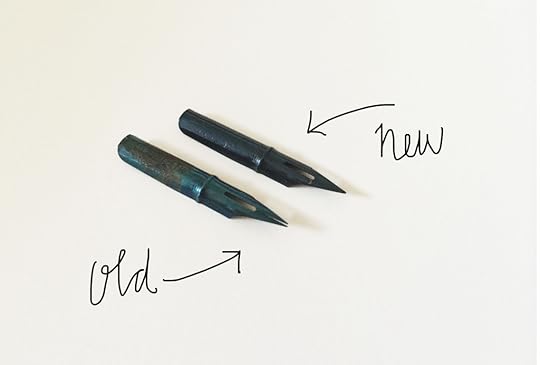 Knowing what to look for in a damaged old nib means that you’ll spot when the nib has seen better days when you clean it up after practice and can discard it – so mo more starting a new practice session with a busted up old nib!
Knowing what to look for in a damaged old nib means that you’ll spot when the nib has seen better days when you clean it up after practice and can discard it – so mo more starting a new practice session with a busted up old nib!
I’m assured that during the learning process it is not uncommon to damage nibs while you learn the balance and pressure needed, so as you build your skills the more life you can preserve from each of your nibs!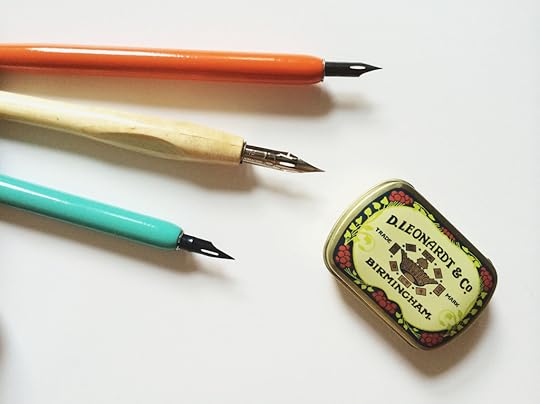 I love having this cute little storage tin to stow all my nibs ready to use…now I’m on the look out for a storage box for all my inks, pen holders and nibs – do you love lettering? How do you store all your supplies?
I love having this cute little storage tin to stow all my nibs ready to use…now I’m on the look out for a storage box for all my inks, pen holders and nibs – do you love lettering? How do you store all your supplies?
The post The Week That Was: Tiny Treats appeared first on Made Peachy.



